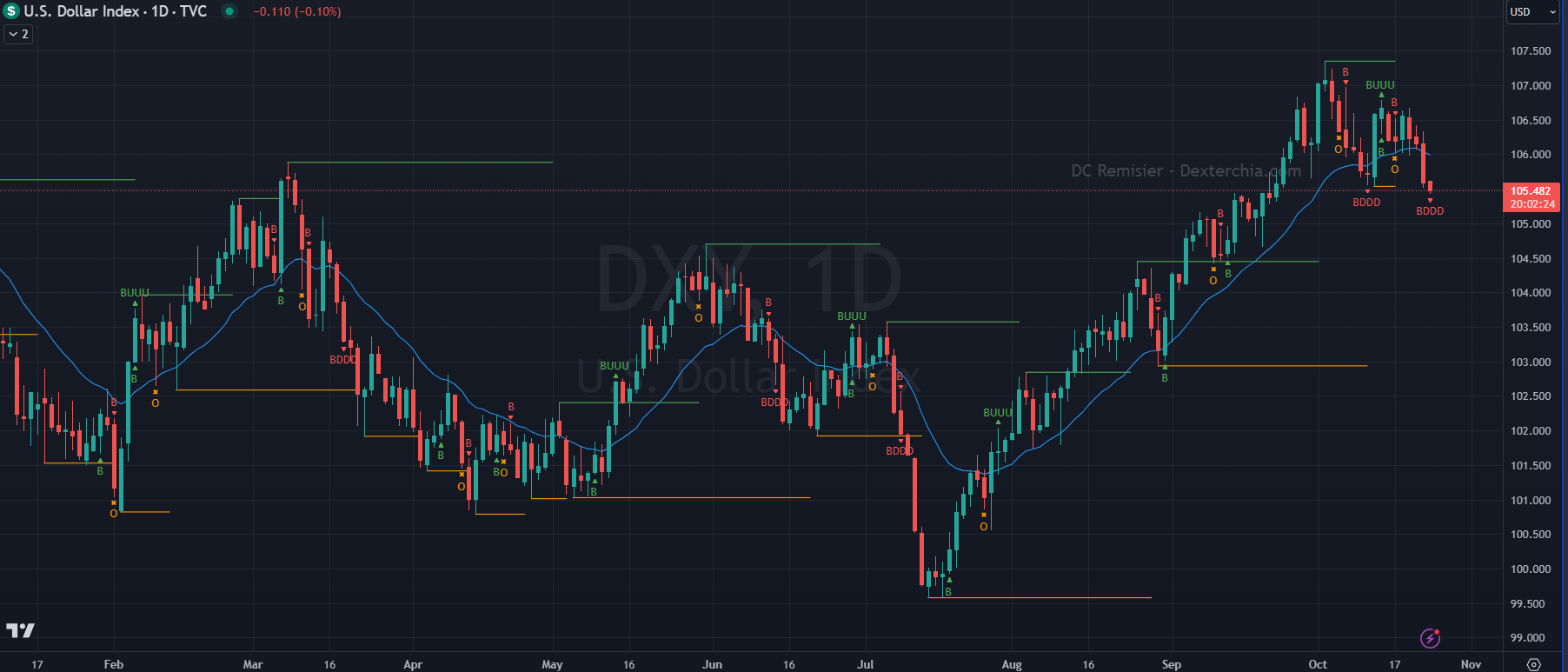What exactly is the U.S. dollar index? In order to give everyone a better understanding, I have compiled the following guide. I hope it will be helpful to everyone. What is Dollar Index? When trading stocks, there are S&P 500 Index, Dow Jones Industrial Index and Nasdaq Index, etc. These indexes are calculated by tracking the price of a basket of stocks. The U.S. Dollar Index, like these stock indexes, also describes the value of a basket of assets, but instead of stocks, currencies are used. The U.S. dollar index is also called the U.S. exchange rate index. The target asset is the exchange rate of the U.S. dollar against six major international currencies (Euro, Japanese yen, British pound, Canadian dollar, Swedish krona and Swiss franc). It is a measure of the U.S. dollar's performance in the international foreign exchange market. A composite indicator of exchange rate changes. The US dollar index is like a thermometer, it tells us the popularity and influence of the US dollar in global markets. The U.S. dollar is the most circulated currency in the world, and many goods and services are priced and settled in U.S. dollars. When the U.S. Dollar Index changes, it affects your investment returns and risks. What is the significance of the rise and fall of the U.S. dollar index? The U.S. dollar index goes up.
US Dollar Index and US Stocks The U.S. dollar index and U.S. stocks usually show a positive correlation. This may be because funds flow to the U.S. market, are optimistic about the U.S. economy or seek safe havens. In this case, the U.S. dollar index appreciates and the stock market also rises. However, in some cases, the U.S. dollar index has a negative correlation or no correlation with U.S. stocks. This may be because a strong U.S. dollar is detrimental to export-oriented companies, reducing their profits and competitiveness. In this case, the U.S. dollar index fell, but the stock market rebounded. For example, in March 2020, when global stock markets collapsed, the U.S. dollar index rose to around 103. However, it subsequently fell to 93.78 due to the out-of-control epidemic in the United States and the Federal Reserve's money printing to rescue the market. Therefore, to judge the impact of the U.S. dollar index on U.S. stocks, we cannot just look at a single factor, but must consider more economic, political and market changes. At different time periods, these factors may have different effects. US Dollar Index and Gold Typically, gold prices fall when the U.S. dollar strengthens and rise when the U.S. dollar weakens. This is because gold is priced in US dollars. If the U.S. dollar strengthens, it becomes more expensive to buy gold, reducing demand and market value for gold. Conversely, when the U.S. dollar weakens, gold becomes less expensive to purchase, increasing demand and market value for gold. Of course, this is not to say that the price of gold is only related to the US dollar. There are many other factors that will also affect the price of gold, such as what major events are happening in the world, whether prices are rising, whether oil prices are falling, etc. US Dollar Index and Asian Stock Markets
Generally speaking, when the U.S. dollar index rises, it means that the U.S. dollar is strong, and funds will flow into the United States, which is bad to the Asian stock markets; However, when the U.S. dollar index falls, it means that the U.S. dollar is weak, and funds will flow out of the United States, which is beneficial to the Asian stock markets.. But this relationship is not fixed. Sometimes, the U.S. dollar index and Asian stock markets rise or fall simultaneously, which may reflect investors' confidence or concerns about the global economy.
0 Comments
Leave a Reply. |
Categories
All
|
|
Alternatively, you may WhatsApp me at +60169059789.
|
About MeAbout CompanyM+ OnlineM+ Global |
Why me?M+ Global FAQsBlog |
